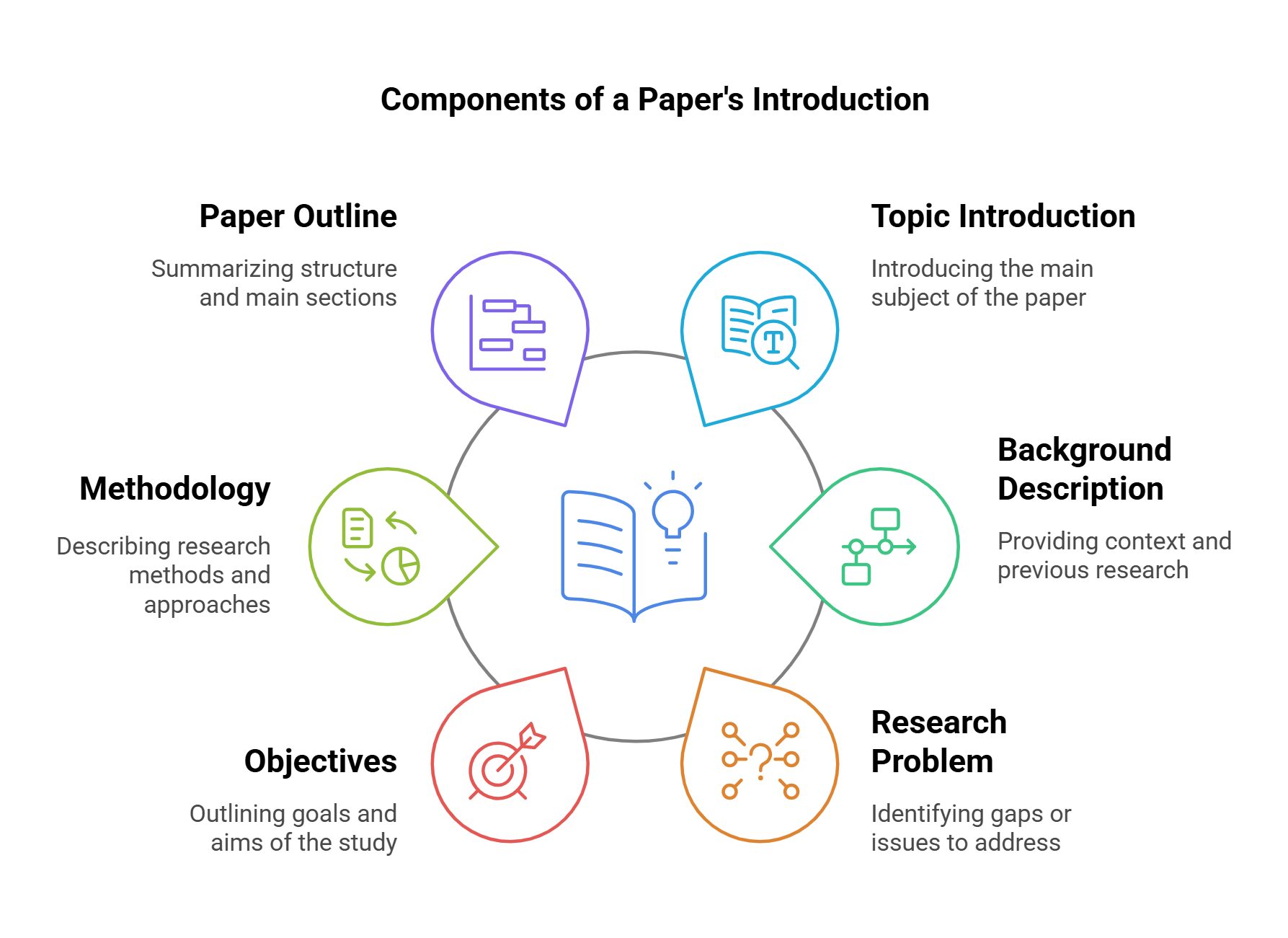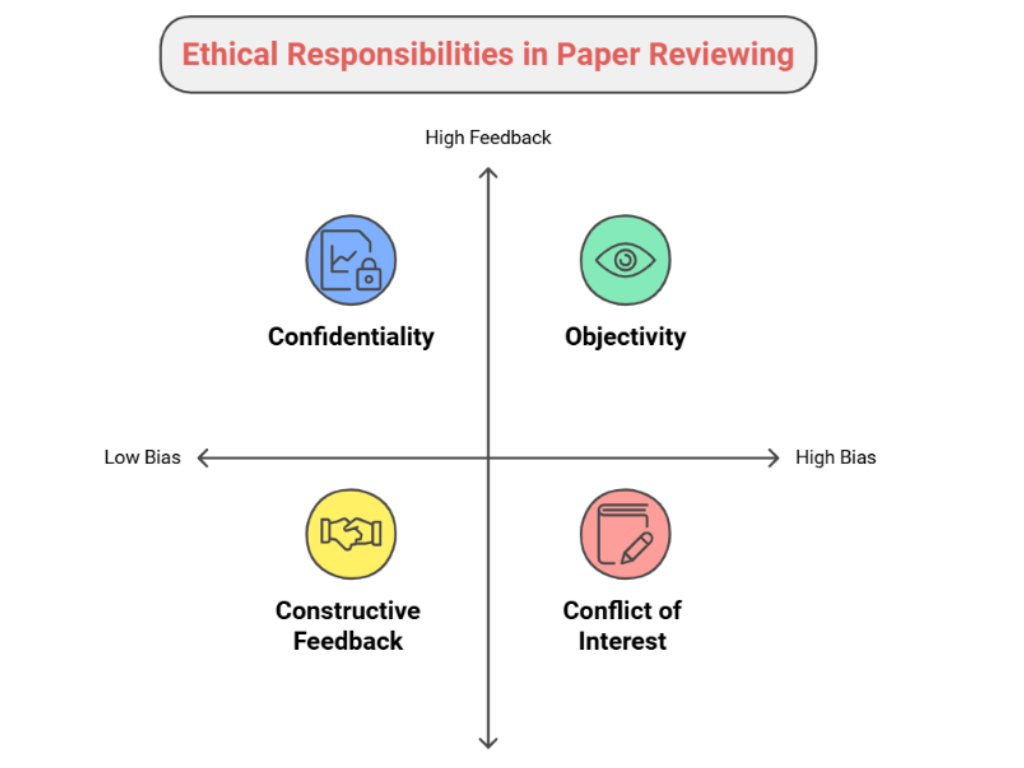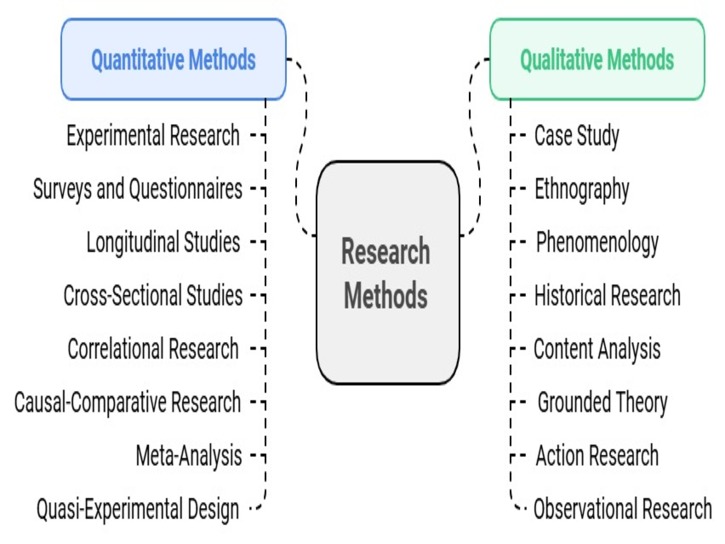
Did you know that many research papers fail to make an impact because their introduction doesn’t engage readers? The introduction is your chance to hook your audience, show why your research matters, and set the stage for your work.
A strong introduction is your paper’s first impression, so make it count!
Here’s a step-by-step guide to writing an impactful introduction, tailored for PhD students.

1. Introduce Your Topic
Start by introducing the broader context of your research. Gradually narrow it down to focus on your specific topic. Use interesting facts, statistics, or real-world examples to highlight the importance of the topic and convince readers that your paper is worth their time.
Example: “”Climate change is one of the most pressing global challenges, yet the transition to renewable energy systems remains slow. This study focuses on addressing barriers to renewable energy adoption in urban settings.””
2. Describe the Background
Provide a brief overview of existing research. Mention 4–6 key studies that relate to your topic, but avoid going into too much detail—save that for the related work section. This sets the stage for identifying the gap in the literature.
Example: “Several studies have explored renewable energy adoption, focusing on policy frameworks and cost analyses. However, there is limited research on behavioral factors influencing adoption in urban communities.”
3. Establish Your Research Problem
Clearly articulate the research problem your paper addresses. Ensure it connects directly to the gap identified in the background section.
Example: “This paper investigates how urban residents’ perceptions of renewable energy influence their adoption decisions, a factor often overlooked in current research.”
4. Clearly State Your Objectives
Define the specific objectives of your study. Use a thesis statement or research questions to present these objectives clearly. Highlight this section with bold or italics to grab attention.
Example:
Objective 1: To analyze the key factors influencing urban renewable energy adoption.
Objective 2: To develop a framework for addressing behavioral barriers.
5. Briefly Report Your Methodology
Give a concise summary of how you conducted your research. Provide just enough detail to reassure readers of your study’s credibility without overwhelming them.
Example: “This study uses a mixed-methods approach, combining survey data from 500 urban residents with in-depth interviews to identify key behavioral barriers.”
6. Present the Outline of the Paper
End your introduction by outlining how the rest of the paper is structured. Let readers know what they can expect in each section
Example: “The next section reviews existing literature on renewable energy adoption. The methodology is then described, followed by the results. Finally, the discussion highlights key implications and future research directions.”
Do you want to receive feedback on your research paper?
Receiving feedback and then incorporating the feedback significantly improves your paper before submission.
For this, try Review-it.
What will you learn?
➟ This tool will identify the strengths and weaknesses in your paper.
➟ You can then address the weaknesses to improve your overall paper.
➟ This tool will also score your paper from 1-10 based on its quality.
| Check it out here: www.review-it.me |
Common Mistakes to Avoid
1. Overloading with Details: Save in-depth discussions for the related work or methodology sections.
2. Making Unsupported Claims: Avoid exaggerating the importance of your work—let your research speak for itself.
3. Using Jargon: Write clearly and use simple terms to ensure accessibility.
4. Abrupt Transitions: Ensure a logical flow between the introduction’s parts.
5. Typos and Errors: Proofread thoroughly to make a polished first impression.
General Tips
1. Use credible references to support your claims.
2. Write the introduction in a way that feels like a story—with a beginning, middle, and end.
3. Make your objectives and contributions stand out by formatting them effectively.
Final Thoughts
Your introduction is your paper’s opportunity to shine. By following this structured approach, you’ll write an introduction that hooks your readers, clearly communicates your research goals, and leaves a lasting impression.
Action Step: Choose a draft paper or project and rewrite the introduction using this 6-step framework. Share it with a colleague or supervisor for feedback.





Pingback: 10 simple ways to 10x your PhD Productivity
Pingback: 10 simple ways to 10x your PhD Productivity
It’s a shame you don’t have a donate button! I’d definitely donate to this outstanding blog! I suppose for now i’ll settle for book-marking and adding your RSS feed to my Google account. I look forward to new updates and will share this website with my Facebook group. Chat soon!